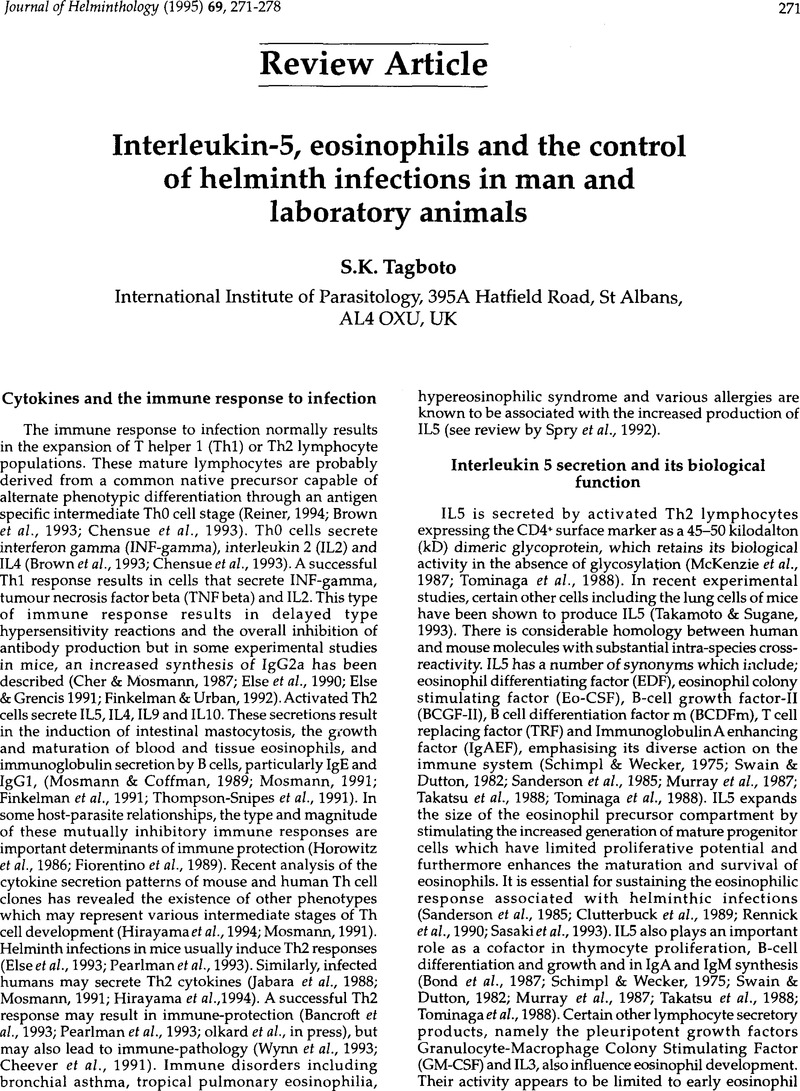Crossref Citations
This article has been cited by the following publications. This list is generated based on data provided by Crossref.
Ovington, Karen S
and
Behm, Carolyn A
1997.
The enigmatic eosinophil: investigation of the biological role of eosinophils in parasitic helmint infection.
Memórias do Instituto Oswaldo Cruz,
Vol. 92,
Issue. suppl 2,
p.
93.
Pacheco, RG
and
Lenzi, HL
1997.
Systemic modulation of peripheral eosinophilia (air pouch model) in Schistosoma mansoni infection.
Memórias do Instituto Oswaldo Cruz,
Vol. 92,
Issue. suppl 2,
p.
165.
McCole, D.F.
Doherty, M.L.
Torgerson, P.R.
and
Baird, A.w.
1998.
Local immune responses in colon from cattle infected with Fasciola hepatica.
International Journal for Parasitology,
Vol. 28,
Issue. 11,
p.
1733.
1998.
Handbook of Imune Response Genes.
p.
219.
Petri, W. A.
Martin, Coralie
Le Goff, Laëtitia
Ungeheuer, Marie-Noelle
Vuong, Phat N.
and
Bain, Odile
2000.
Drastic Reduction of a Filarial Infection in Eosinophilic Interleukin-5 Transgenic Mice.
Infection and Immunity,
Vol. 68,
Issue. 6,
p.
3651.
Bandeira-Melo, Christianne
Serra, Magda F.
Diaz, Bruno L.
Cordeiro, Renato S. B.
Silva, Patricia M. R.
Lenzi, Henrique L.
Bakhle, Y. S.
Serhan, Charles N.
and
Martins, Marco A.
2000.
Cyclooxygenase-2-Derived Prostaglandin E2 and Lipoxin A4 Accelerate Resolution of Allergic Edema inAngiostrongylus costaricensis-Infected Rats: Relationship with Concurrent Eosinophilia.
The Journal of Immunology,
Vol. 164,
Issue. 2,
p.
1029.
2002.
Immunotoxicology and Risk Assessment.
p.
283.
Malla, Nancy
Fomda, Bashir Ahmad
and
Thokar, Manzoor Ahmad
2006.
Serum cytokine levels in human ascariasis and toxocariasis.
Parasitology Research,
Vol. 98,
Issue. 4,
p.
345.
Intapan, Pewpan M.
Kittimongkolma, Suvicha
Niwattayakul, Kanigar
Sawanyawisuth, Kittisak
and
Maleewong, Wanchai
2008.
Cerebrospinal fluid cytokine responses in human eosinophilic meningitis associated with angiostrongyliasis.
Journal of the Neurological Sciences,
Vol. 267,
Issue. 1-2,
p.
17.



